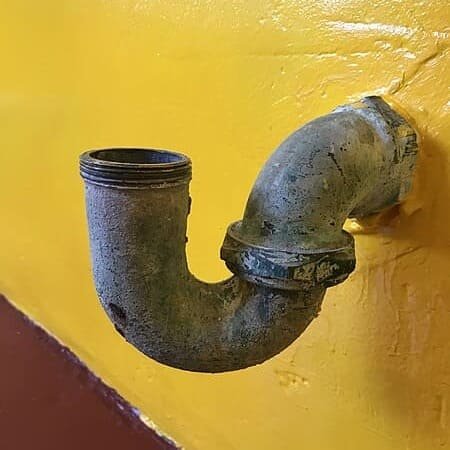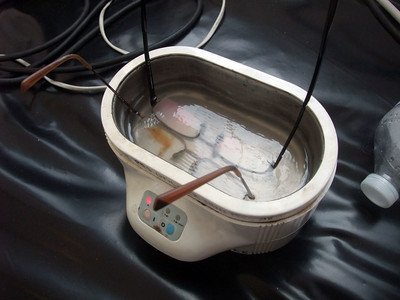The P-Trap sits quietly under your sinks and fixtures, tirelessly guarding your home from unpleasant sewer gases and the occasional creepy-crawly. While it might not look like much—a U-shaped bend in a pipe—the P-trap performs a critical role in maintaining the health and hygiene of your household. But as with all things, even this plumbing workhorse is not immune to the occasional hiccup.
Let’s dive into the most common P-trap problems and how to troubleshoot them with confidence. We’ll explore each issue in detail, unpack why it happens, and arm you with practical solutions. Consider this your ultimate guide to tackling P-trap troubles like a pro.

The Persistent Odor: A Smelly Situation
You’re washing dishes or brushing your teeth, and suddenly, a foul odor wafts up from the drain. This is perhaps the most common sign that your P-trap isn’t doing its job. The primary purpose of a P-trap is to hold a small amount of water, creating a barrier that prevents sewer gases from escaping into your home. If that barrier fails, your nose will be the first to know.
Why It Happens:
- Dry P-Trap: If a sink or fixture hasn’t been used for a while, the water in the trap can evaporate, leaving it unable to block the odors.
- Leaks: A slow or unnoticed leak might cause the water level in the trap to drop below the critical point needed to maintain the seal.
- Improper Installation: A poorly installed P-trap might fail to maintain the necessary water barrier, especially if the alignment or connections are off.
Troubleshooting:
1. Top It Off: Start with the simplest fix: run water into the drain to refill the trap. This is often all that’s needed for dry traps.
2. Inspect for Leaks: Check the trap and surrounding areas for visible signs of water dripping or pooling. Tighten connections if needed and ensure the trap is securely fastened.
3. Seal It Right: If you suspect installation issues, ensure the trap’s U-shape is intact and that all connections are snug. If adjustments don’t work, it may be time to call a professional to assess and reinstall the trap correctly.
For persistent smells, consider cleaning the surrounding pipes. Buildup in the drainpipe leading to the P-trap can also contribute to odors that seem like a trap issue.
Clogs: The Pesky P-Trap Blockage
P-traps are prone to clogs because they’re essentially a natural debris trap. Hair, soap scum, grease, and food particles love to collect in that curved section of pipe. While the design keeps sewer gases out, it also makes the trap a perfect location for blockages to form.
Why It Happens:
- Daily Use: Over time, the accumulation of debris becomes inevitable, especially in busy households.
- Grease and Oil: Pouring cooking grease or oil down the sink creates a sticky residue that hardens and traps other debris.
- Foreign Objects: Small items, like jewelry or children’s toys, can accidentally fall into the drain and become lodged in the trap.
Troubleshooting:
1. DIY Cleaning: Start by placing a bucket under the trap to catch any water, then unscrew the nuts securing the trap. Carefully remove and clean out any debris. This process can get messy, but it’s usually effective.
2. Plunging: For less severe clogs, try using a plunger. Cover the overflow drain (if present) to create a seal and apply firm, consistent pressure to dislodge the blockage.
3. Snake It Out: For deeper clogs, a plumber’s snake or drain auger can help break up and remove the obstruction. Insert it carefully to avoid damaging the pipes.
Pro Tip: To prevent future clogs, consider using a drain strainer to catch debris before it enters the trap. Avoid pouring grease or oil down the drain, and regularly flush your drain with hot water and a little dish soap.
Leaks: The Silent Drip
A leaky P-trap might not cause immediate flooding, but over time, even a small leak can lead to significant water damage and mold growth. Addressing leaks promptly is critical to maintaining your plumbing and preventing further issues.
Why It Happens:
- Loose Connections: Daily vibrations from water flow or general use can loosen the nuts and fittings on the trap.
- Cracks or Corrosion: Plastic traps can crack due to age or stress, while metal traps are susceptible to rust and corrosion over time.
- Worn Gaskets: The rubber washers or gaskets in the trap connections can degrade, allowing water to seep through.
Troubleshooting:
1. Tighten Connections: Use your hands or a wrench to carefully tighten the trap’s fittings. Avoid overtightening, which can damage the fittings or the trap itself.
2. Replace Gaskets: If tightening doesn’t stop the leak, inspect the gaskets. Replace any worn or degraded gaskets with new ones designed for your trap’s size and material.
3. Upgrade the Trap: If the trap itself is damaged, replace it. PVC traps are a popular choice due to their durability, affordability, and ease of installation. Follow manufacturer instructions or consult a plumber for help.
Regular inspection of your P-trap can help catch leaks early. If you notice recurring leaks, it may indicate larger plumbing issues that require professional intervention.
The Mystery of the Double Trap
Believe it or not, some plumbing setups feature a double trap, where two P-traps are installed on the same drain line. While this might seem harmless, it often causes problems with water flow and venting, disrupting the system’s efficiency.
Why It Happens:
- DIY Errors: Inexperienced installers might add an extra trap, thinking it provides additional protection.
- Overengineering: Some overly cautious homeowners might assume that more traps mean better odor control or drainage.
Troubleshooting:
1. Identify and Remove the Extra Trap: Locate the secondary trap and remove it. Ensure that the remaining P-trap is properly aligned and connected.
2. Reconfigure the Plumbing: If the extra trap was compensating for other plumbing issues, such as improper venting, address those problems to restore proper function. Consult a professional if needed.
Gurgling Drains: A Symphony of Plumbing Woes
If you hear gurgling noises coming from your drains, it’s more than just an annoyance—it’s a sign that your plumbing system might be struggling with venting issues.
Why It Happens:
- Air Pressure Imbalance: P-traps rely on balanced air pressure to allow water to flow smoothly. A blockage in the vent system can create a vacuum, causing gurgling noises.
- Clogged Vents: Leaves, debris, or even bird nests can obstruct your vent stack, preventing air from flowing freely.
Troubleshooting:
1. Clear the Vent Stack: Climb to your roof and inspect the vent stack. Remove any visible debris, and use a plumber’s snake or hose to clear blockages.
2. Install an AAV: In some cases, an air admittance valve can help balance air pressure without major modifications. These valves are easy to install and can resolve venting issues effectively.
Persistent gurgling might indicate more complex venting problems that require professional assessment and repair.
Frozen P-Traps: Winter Woes
In colder climates, P-traps located in unheated areas like basements, crawl spaces, or outdoor sinks are at risk of freezing. When water in the trap freezes, it can cause blockages and even damage the pipe.
Why It Happens:
- Extreme Cold: Uninsulated pipes in poorly heated spaces are vulnerable to freezing temperatures, especially during prolonged cold snaps.
Troubleshooting:
1. Thaw the Trap: Use a hairdryer or heat tape to gently warm the trap and melt the ice. Avoid using open flames, which can damage pipes and create fire hazards.
2. Insulate the Pipes: Wrap the trap and nearby pipes with pipe insulation to prevent future freezing. For added protection, use heat tape before applying insulation.
3. Improve Heating: Consider adding a space heater or increasing insulation in areas where pipes are exposed to extreme cold. Maintaining a consistent temperature can help prevent freezing altogether.
The P-trap might not be the most glamorous part of your plumbing, but it’s certainly one of the most vital. By understanding the common problems it faces and knowing how to troubleshoot them, you can keep your plumbing system running smoothly and avoid costly repairs. A little proactive maintenance can save you a lot of time, money, and frustration in the long run. And when in doubt, don’t hesitate to call a professional—your nose, wallet, and peace of mind will thank you.



